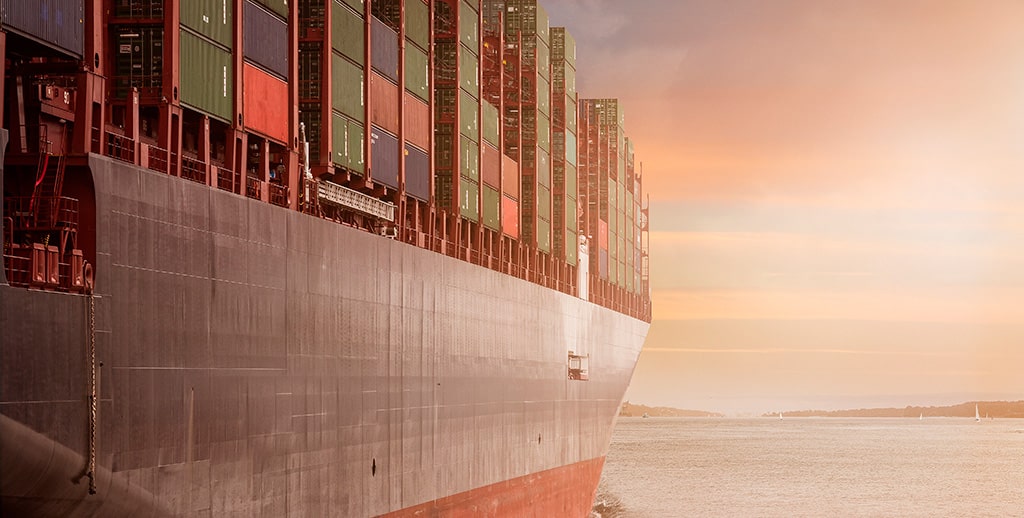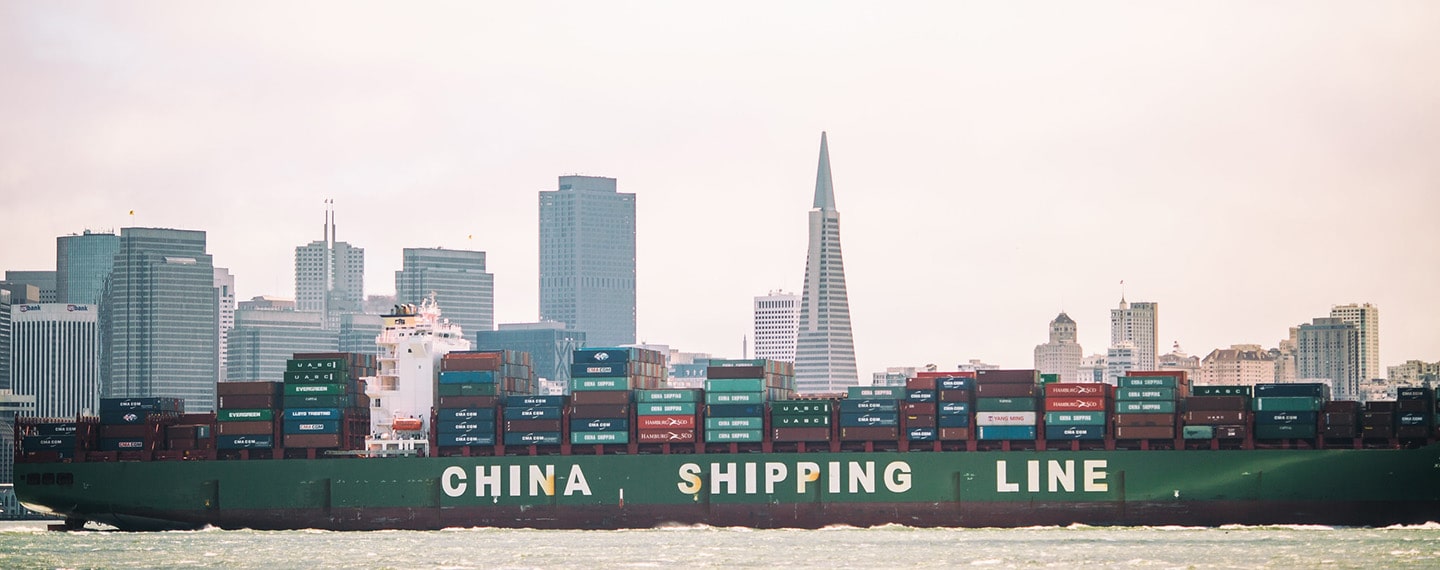Theme
The geopolitical tensions between the US and several of its allies on one side and China on the other have led to proposals for an economic and trade decoupling between the Western bloc and China. In this context, the present analysis evaluates the direct dependencies that Spanish supply chains have on Chinese imports.
Summary
China’s growth in recent decades has given it the status of a world power, altering the prevailing power relations. One of the consequences of this phenomenon has been a growing Sino-US rivalry that exemplifies the classic model of competition between a hegemonic and an emerging power. Moreover, China has displayed a greater willingness to use its economic ties as a lever for putting pressure on other countries. These factors have been the pretext, in the US and several of its allies, for voices advocating a decoupling with China, and Chinese initiatives such as dual circulation, geared towards reducing dependence on countries that are not geostrategically aligned. Doubts have emerged among Spain’s main international allies about the state of supply chains and the vulnerabilities implicit in an excessive dependence on China for the supply of essential products. This analysis uses data from Comtrade to identify products where Spain’s supply chains are critically dependent upon China, and finds that they are concentrated in industries such as pharmaceuticals and others that are indispensable for the green and digital transformation.
Analysis
The spectacular development of China, which has positioned itself as the only country capable of challenging the hegemony of the US, is having widespread consequences on the prevailing world order.[1] Its growth, which has been not only economic but also technological and military, has led to more confrontational relations between China and the hegemon. It is a shift that has had far-reaching implications in worldwide economic, political and security terms in recent years.[2]

China’s recourse to illicit tactics to consolidate its economic development is one of the causes of the confrontation, because these practices weaken the competitiveness of companies and its trading partners and distort markets.[3] Another concern is the growing leveraging of its international economic ties as part of a coercive diplomatic strategy, exacerbated by a rift on issues of governance and values that divides China from the traditional powers.[4] The first warning of China’s willingness to use its export capabilities to exert pressure on other countries came with its cutting of rare earth exports to Japan in 2010 as a result of heightened tensions over the Senkaku/Diaoyu islands.[5]
As for the US, a bipartisan consensus of Republicans and Democrats has existed since the Trump presidency pinpointing China as the main threat to its hegemony. In this context, there has been a growing instrumentalisation of economic interdependence for political and strategic ends that has led to a much greater emphasis on security in international relations. One of the effects has been an increase in calls for decoupling and this, set against the backdrop of the pandemic, has exposed the vulnerability of supply chains where there is an excessive dependency on limited suppliers of essential goods. It is a debate that has also spread to the EU, which, in the new geopolitical context, and amid the pressure exerted by the US and China, is trying to build its strategic autonomy and safeguard the resilience of its supply chains. The latter issue takes on particular urgency in relation to a supplier as significant and as beset by reliability doubts as China.
The Spanish context
Spain’s position amid the rivalry between the two superpowers has made it necessary to reflect on how the ramifications might affect the country; although Spanish exports have not been hit in any major way by the heightened tensions, as far as imports are concerned there are indeed points of vulnerability.
The ability to generate added value in Spanish supply chains has diminished in recent years. This can be attributed to the fact that, despite Spanish manufacturers having more backward linkages, the imported content of their output has increased.[6] This growth has been reflected in the rise of annual imports from China as a proportion of Spain’s total imports, which rose from 3.3% in 2002 to 10.7% in 2020.[7] Dependence on China in trade is attended by risks in the event of a shortage of certain products and, in turn, by potential damage to the prospects for Spanish output.
Risks and vulnerabilities
Supply chains have built-in risks and vulnerabilities, the result of their individual characteristics and the order in which they have been configured and linked to the preference for reducing costs. As time has gone by, supply chains have emerged that exhibit fragility owing to factors such as the concentration of production in a small number of specialised centres, the reduction of inventories and the lack of transparency stemming from the inherent complexity of trading networks, to which must be added the lack of transparency in many processes within China itself.[8] These factors are not new but take on increased importance at times of instability.
In addition, these networks are subject to external factors such as the volatility of markets and changes in the international context. Developments like the rivalry between the US and China and the COVID-19 crisis have accelerated the tendency to instrumentalise interdependence and to refer to national security interests in the context of international economic relations.
Methodology
In order to gauge the state of dependency on China in Spanish supply chains, a quantitative analysis has been conducted based on 2019 data taken from the Comtrade database. The methodology is inspired by research from the Henry Jackson Society, which deems that strategic dependency on China in a product exists if three criteria are fulfilled: (1) the country is a net importer of the product; (2) more than 50% of the product is imported from China; and (3) China controls more than 50% of the global market in the product.[9] In this way it is possible to identify the product categories where Spain has a strategic dependency on China, signifying in turn that China can have a major impact on the availability of such goods in Spain. Having identified the product categories subject to strategic dependence, a qualitative analysis was conducted to determine goods classified as critical, those where limited access has the potential to jeopardise or render a country’s economy vulnerable. Here it must be underlined that the strategic dependence stems not only from the existing concentration of trade, but also from the possibility or otherwise of diversifying. Depending on raw materials that emanate only from China is not the same as depending on products made in China simply because this country has specialised in their cheap and efficient production.
An alternative methodology for gauging dependencies in supply chains would be to conduct the analysis at the level of companies. The research would thus give prominence to the exposure of SMEs, which account for an enormous part of Spain’s productive fabric, and show the degree of supply chain dependency on specific suppliers. The problem with this approach, however, resides in a shortage of data needed to carry the research out.[10]
Results
The results bear similarities to those of other studies conducted in Europe,[11] which reveal critical strategic dependence in industries with high energy inputs, such as raw and processed materials, in chemical products needed for the pharmaceutical industry, as well as sectors that support the green and digital transformation.
Figure 2 shows the product categories deemed as strategic that fulfil the three conditions mentioned above.
| Product | Use | Spain imports from China (%) | China’s share of the global market (%) |
| Cloramphenicols and their by-products; salts of these products | Antibiotics | 91.04 | 86.63 |
| Light-emitting diode (LED) bulbs and tubes | Electronics | 87.47 | 80.93 |
| Manganese and its products, including scrap and waste | Metal | 90.06 | 72.22 |
| Rare earth metals, scandium/yttrium | Electronics | 97.27 | 63.05 |
| Streptomycin and its derivatives, salts of these products | Antibiotics | 83.64 | 74.41 |
| Radio receivers capable of operating without an external energy source, with a sound recorder/player | Electronics | 85.47 | 64.15 |
| Unrefined magnesium, with a magnesium content less than 99.8% by weight | Metal | 80.57 | 65.50 |
| Radio receivers, combined with sound recording or playing device | Electronics | 66.70 | 76.67 |
| Vitamin B12 | Pharmaceutical component | 85.46 | 56.22 |
| Unrefined magnesium (with a magnesium content greater than or equal to 99.8% by weight) | Metals | 62.50 | 78.99 |
| Cortisone, hydrocortisone, “dihydrocortisone” prednisone and “dihydrocortisone” prednisolone | Pharmaceutical component | 81.93 | 59.47 |
| Tetracyclines and their by-products; salts of these products | Antibiotics | 84.62 | 53.50 |
| Vitamin C and its by-products used mainly as vitamins | Pharmaceutical component | 68.42 | 64.42 |
| Vitamin B6 and its by-products, used mainly as vitamins | Pharmaceutical component | 62.55 | 69.93 |
| Alkaline or alkaline earth metals, calcium | Chemical product | 70.70 | 59.92 |
| Aminonaphthalenesulphonic acids and their salts | Pharmaceutical component | 66.12 | 61.24 |
| Radio receivers with clocks | Electronics | 61.24 | 65.20 |
| Heterocyclic compounds with a heteroatom of oxygen, uncondensed | Pharmaceutical component | 68.21 | 54.69 |
| Natural and synthetically-produced glycosides; their salts, ethers, esters and other by-products (exc. rutoside ‘rutin’ and their by-products) | Pharmaceutical component | 59.16 | 56.49 |
| Vitamin B1 and its by-products used mainly as vitamins | Pharmaceutical component | 59.38 | 56.14 |
| Permanent magnets and metal items designed to be permanently magnetised | Electronics | 53.32 | 55.40 |
| Heterocyclic components with heteroatoms with triazines | Pharmaceutical component | 55.38 | 51.78 |
Dependency in pharmaceutical components
The chains responsible for producing medicines show the greatest degree of integration in world trade, with the involvement of numerous countries in the manufacture and distribution of each product.[12] Owing to the priority placed on reducing costs, 66% of the production of active ingredients takes place in the Asia-Pacific region, especially China and India, although the latter also depends on China for the production of its generic drugs.[13] Given this concentration of pharmacological production, Spain’s considerable dependence on China for the supply of certain active ingredients and other substances used in medicines, as shown in Figure 2, is hardly surprising. These include three classes of antibiotic: chloramphenicol, streptomycin and tetracycline. In addition to the dependency on antibiotics, Figure 2 also reveals a dependency on a series of nutrients, namely vitamins B1, B6, B12 and C, as well as hormones, calcium, heterocyclic components and glycosides.
Given the high costs involved in producing these substances in Europe, the high level of energy input required and significant major environmental impact, the bulk of production seems set to continue abroad. Moreover, the fact that output of active ingredients and other pharmacological components takes place in a limited number of countries hinders efforts at diversification.[14]
Guaranteed access to high-quality medicines is fundamental for the entire population, and a possible shortage of this type of product could have a disastrous impact on the country’s public health and economy. A scarcity of medicines is defined by the Spanish Agency of Medicines and Medical Devices as ‘the situation in which the availability of the drug in the pharmacological system is outstripped by needs’.[15] This scenario was already arising prior to the pandemic, and there have been increasingly frequent episodes in recent years, resulting in greater costs for patients, who also feel increasing dissatisfaction with the service received. In accident and emergency departments, the shortage of medicines can lead to risks to the safety of patients and a rise in mortality. Given the substantial risk that possible disruption to supply chains in this industry pose to public health and its destabilising potential, ensuring the resilience of such chains is a priority for national security.
Dependency in raw materials
The problem of dependency in raw materials is intimately linked to the goal of implementing the green and digital transformation, which is fundamental for the development of Spain and a priority for the EU. However, dependencies in raw materials that are indispensable for this transformation have been detected.
First, rare earths are used in renewable energy, robotics and drones, and in information and communication technologies used in security and defence.[16] As Figure 2 shows, there is a very high dependency in scandium and yttrium. In the case of the rare earths, China wields an ever-greater control of the supply networks for these elements, given that it has 85% of the worldwide capacity to transform the minerals into material for manufacturers. The alternative of developing extraction plants in other areas would require huge investment and be uncompetitive with Chinese output, meaning that diversification will remain elusive for some time.[17]
Secondly, magnesium is deemed to be essential for the digital transformation, given its use in sectors such as innovation in energy, transport, construction and computing. As far as its application to what the EU calls its strategic technologies is concerned, this metal is used in fuel cells, with applications in robotics, drones and digital technologies, including blockchain technologies, quantum computing and data exchange.
Thirdly, mention must be made of lithium batteries and cells, the production of which requires nickel, cobalt, lithium, graphite, fluorite, phosphorous and manganese (the latter forming part of the strategic dependency list in Spain). The EU is warning that the production of processed goods and components related to batteries is predominantly sited in Asia, which accounts for 84% of the production, something that hinders diversification.[18] In Spain, where projects are already underway to build lithium battery factories, the problem could arise once the demand for these raw materials increases.
Dependency in electronics and other components
The fact that Spain exhibits dependencies in product categories belonging to the digital, electronic and renewable energy sectors must be a cause for concern given the prospects of growing value in these sectors in coming decades.
Light emitting diodes are currently the most efficient technology for producing light and have longer useful lifespans and an astonishing array of applications in lighting, signposting, mobile telephone screens, computer equipment, etc. These are essential components for electronic devices and a shortage would have serious impacts on the country’s economy.
Turning next to radio receivers, as Figure 2 suggests, Spain has a considerable dependency on China for this type of device, and in three different guises. Among other uses, these receivers are crucial for maritime security and aviation, as well as being vital elements in ensuring a medium of communication in emergencies.
In the case of permanent magnets, these are materials that retain significant degrees of magnetisation even in the context of temperature changes on in the presence of other magnetic fields. These products have prominent applications in the car industry, electronics, automation of factories, medicine and defence.[19] They are used for example in electric motors and in wind turbines, as well as for storing data, and accordingly are deemed essential to the green and digital transformation. The EU has thus launched an initiative to promote investment in this field and provide solutions to strengthen the supply chains for this type of component.[20]
Conclusions
The international order is going through tumultuous times marked by growing geopolitical tensions. The strategic rivalry that characterises the relationship between the US and China has led to proposals that involve decoupling in economic and trade terms from China, and a greater willingness on China’s part to use its economic relations with other countries as a coercive lever. This has induced several countries to question the state of their supply chains and to view as vulnerabilities any points that show a strategic dependency on Beijing.
The contribution this study seeks to make is an initial evaluation of the direct dependencies on China in the Spanish context, and it shows a dependency involving certain products in essential sectors, such as healthcare and sectors that are indispensable to the green and digital transformation. For a complete evaluation, it would also be advisable to analyse the indirect dependencies that arise in relation to other economic zones, enabling a comprehensive panorama to be obtained showing the dependency of Spanish supply chains on Chinese suppliers.
With effective management of the dependencies, whether by means of diversifying the sources of supply and/or industrial polices when they prove necessary, this situation could present an opportunity in the field of trade both for Spain and its European partners. If a regionalisation effect emerges, Spain’s participation in supply chains could be augmented, whether in terms of developing national output or in terms of the advantage Spanish companies would enjoy by virtue of their greater presence in Mediterranean countries.[21]
[1] The author wishes to thank Mario Esteban, Enrique Feás and Federico Steinberg for their valuable comments on previous versions of this text.
[2] Mario Esteban (2021), ‘España ante la rivalidad estratégica entre China y Estados Unidos’, Elcano Policy Paper, Elcano Royal Institute,
[3] Julie Smith, Andrea Kendall-Taylor, Carisa Nietsche & Ellison Laskowski (2020), ‘Charting a transatlantic course to address China’, Center for a New American Security,
[4] Hans Binnendijk & Sarah Kirchberger (2021), ‘The China plan: a transatlantic blueprint for strategic competition’, Atlantic Council.
[5] Shunsuke Tabeta (2021), ‘China tightens rare-earth regulations, policing entire supply chain’, Nikkei Asia.
[6] Francisco Pérez García (2020), ‘La competitividad española en las cadenas de valor globales’, BBVA Foundation, Bilbao.
[7] Mario Esteban (2021), op. cit.
[8] Clinton Free & Angela Hecimovic (2021), ‘Global supply chains after COVID-19: the end of the road for neoliberal globalisation?’, Accounting, Auditing & Accountability Journal, vol. 34, nr 1,
[9] James Rogers, Andrew Foxall, Matthew Henderson & Sam Armstrong (2020), ‘Breaking the China supply chain: how the “Five Eyes” can decouple from strategic dependency’, https://henryjacksonsociety.org/publications/breaking-the-china-supply-chain-how-the-five-eyes-can-decouple-from-strategic-dependency/. The original set the threshold for control of the global market at 30%, but it was later raised to 50% to obtain more conclusive results.
[10] Lucian Cernat & Óscar Guinea (2020), ‘On ants, dinosaurs, and how to survive a trade apocalypse’, Ecipe.
[11] European Commission (2021), ‘Strategic dependencies and capacities’, https://ec.europa.eu/info/sites/default/files/swd-strategic-dependencies-capacities_en.pdf; European Commission (2020), ‘Critical materials for strategic technologies and sectors in the EU – A foresight study’, https://ec.europa.eu/docsroom/documents/42881; and Max J. Zenglein (2020), ‘Mapping and recalibrating Europe’s economic interdependence with China’, Merics China Monitor, Berlin, https://merics.org/en/report/mapping-and-recalibrating-europes-economic-interdependence-china.
[12] European Commission (2021), op. cit.
[13] The White House (2021), ‘Building resilient supply chains, revitalizing American manufacturing, and fostering broad-based growth’.
[14] European Commission(2021), op. cit.
[15] Miguel Ángel Hernández Rodríguez & Ramón Orueta Sánchez (2019), ‘Desabastecimiento de medicamentos en España. Un problema de salud’, Atención Primaria, vol. 51, nr 10, p. 599-601,
[16] European Commission (2020), op. cit.
[17] Reuters (2019), ‘US dependence on China’s rare earth: trade war vulnerability’, Reuters.
[18] European Commission(2021), op. cit.
[19] Germán Antonio Pérez-Alcázar (2016), ‘Imanes permanentes: características, aplicaciones y futuro’, Revista de la Academia Colombiana de Ciencias Exactas, Físicas y Naturales, vol. 40, nr 155, p. 221-233.
[20] European Commission (2020), op. cit.
[21] Mario Esteban (2021), op. cit.
Image: Container ship from China. Photo: Thomas Hawk (CC BY-NC 2.0)



